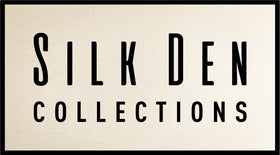Edo-Komon Dye Pattern Technique
The Edo-Komon dye pattern technique is a traditional Japanese textile dyeing method characterized by its intricate, small, and often finely detailed patterns. It has a rich history and cultural significance, especially tied to the Edo period. Here’s an overview of the technique:
Edo-Komon Dye Pattern Technique
1. Historical Background:
• Origin: Edo-Komon originated during the Edo period (1603-1868) in Japan, specifically in Edo (now Tokyo). It was initially used for samurai clothing, particularly their kamishimo (formal attire), to indicate status and clan affiliation.
• Evolution: Over time, the technique spread to commoners and became popular for kimono fabric, symbolizing elegance and sophistication.
2. Process:
• Stencil Dyeing (Katagami): The Edo-Komon technique relies on stencils, known as katagami, to create its intricate patterns. These stencils are traditionally made from mulberry paper treated with persimmon tannin to make them durable.
• Rice Paste Resist: A rice paste resist (nori) is applied through the stencil onto the fabric. The fabric is then dyed, with the paste preventing the dye from penetrating the stenciled areas.
• Repetition and Precision: The patterns are often very small and repetitive, requiring great precision in stencil alignment and dye application to ensure uniformity and clarity of the design.
3. Design and Patterns:
• Komon Patterns: Edo-Komon features a variety of tiny, repetitive patterns. Common motifs include dots, stripes, and small geometric shapes, often so small that they appear solid from a distance.
• Symbolism: Each pattern can have specific meanings or associations. For example, dots (known as “asa-no-ha”) can represent hemp leaves, symbolizing growth and resilience.
• Subtle Elegance: The subtlety of Edo-Komon patterns reflects the restrained elegance valued in Edo-period aesthetics, often requiring close inspection to appreciate the intricacy.
4. Modern Use:
• Kimono Fabric: Edo-Komon remains a popular choice for kimono fabric, particularly for formal and semi-formal occasions, due to its sophisticated appearance.
• Contemporary Applications: The technique is also applied to other textile products, such as scarves, handkerchiefs, and modern fashion items, blending traditional craftsmanship with contemporary style.
